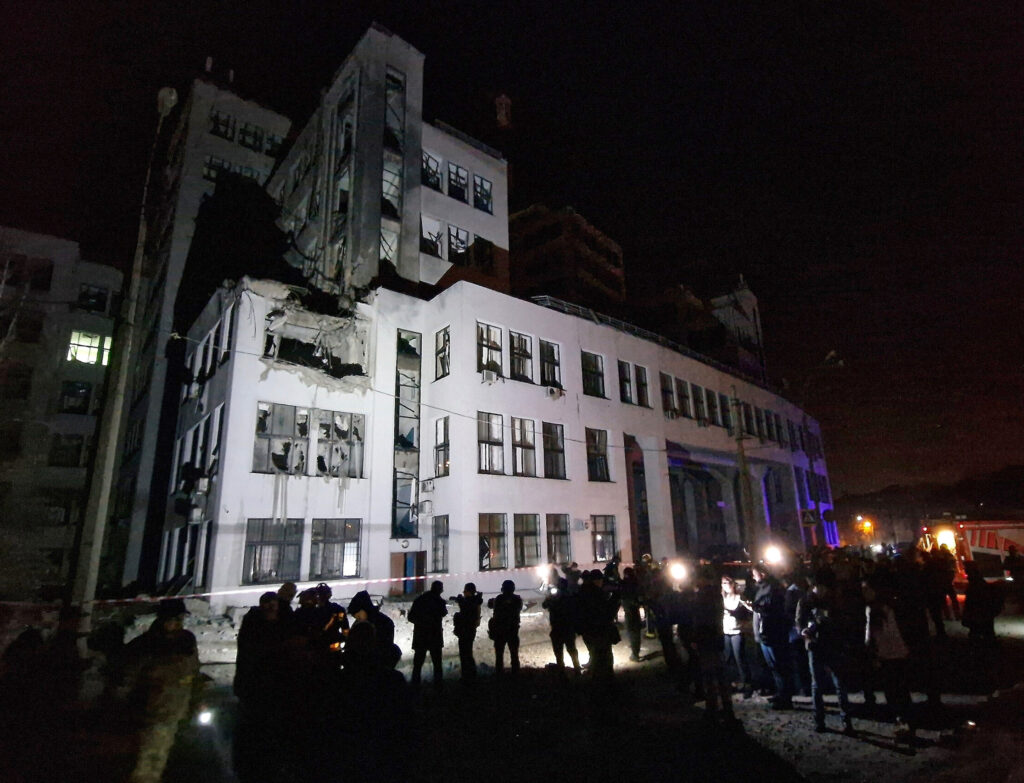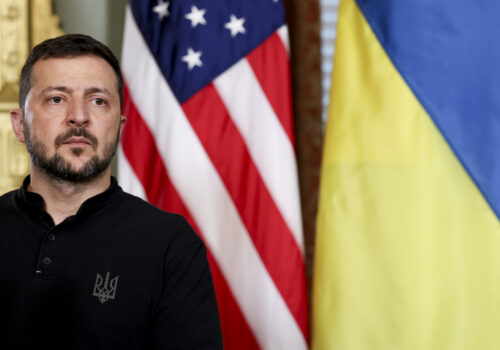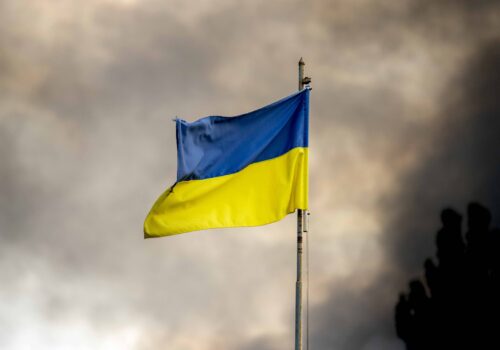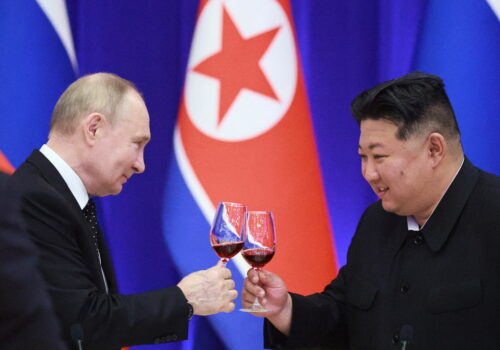
Putin’s war on Ukrainian heritage: Russia bombs first Soviet skyscraper

Russia bombed and partially destroyed one of Ukraine’s most recognizable national landmarks on Monday evening in the heart of the country’s second city. The targeted bombing of the iconic Derzhprom building in central Kharkiv was the latest in a series of attacks on Ukrainian heritage sites that many regard as evidence of a deliberate Kremlin campaign to erase Ukraine’s national identity.
The Derzhprom building stands at one end of Kharkiv’s vast central square and serves as a prominent symbol of the city. Built in the 1920s at a time when Kharkiv served as the capital of Soviet Ukraine, the Derzhprom building was the first modern skyscraper in the USSR. When it was unveiled in 1928, the building was promoted as a flagship project showcasing the innovation of the Soviet Union. It remains an internationally important example of the Constructivist architectural school.
Ukrainian President Volodymyr Zelenskyy said Monday’s bombing had “severely damaged” the Derzhprom building and called for international solidarity. “Appeasement never brings peace; it simply feeds the aggressor’s appetite,” he commented. “Instead, we must isolate the aggressor and increase the pressure on him until he ceases terror. Adhering to shared principles saves human lives and cultural heritage. Compromising them brings death and ruin.”
Others noted that while the Derzhprom building had managed to emerge relatively unscathed from the carnage of World War II when Kharkiv repeatedly witnessed intense battles between Nazi and Soviet forces, it had now joined the long list of Ukrainian landmarks and sites of cultural significance to be damaged or destroyed by Russia’s invasion. “If we look back at World War II, even Hitler couldn’t do what the Russians have done,” commented Kharkiv Mayor Ihor Terekhov.
Stay updated
As the world watches the Russian invasion of Ukraine unfold, UkraineAlert delivers the best Atlantic Council expert insight and analysis on Ukraine twice a week directly to your inbox.
Russia’s full-scale invasion of Ukraine has included hundreds of targeted attacks on Ukrainian heritage sites across the country. By the middle of October 2024, UNESCO officials had verified damage to 457 sites including churches, museums, monuments, and libraries. This figure may only represent a fraction of the real total, however. Crucially, it does not include the systematic destruction of Ukrainian heritage sites throughout regions of Ukraine currently under Russian occupation.
Attacks on Ukraine’s heritage sites are one element of the Kremlin’s broader efforts to erase Ukrainian national identity. Russian President Vladimir Putin has set the tone with his regular denials of Ukraine’s right to exist and insistence that Ukrainians are in fact Russians (“one people”). Since the invasion of Ukraine began in 2014, areas that have fallen under Kremlin control have been declared “historically Russian” and subjected to ruthless policies of russification. This has included the exclusion of the Ukrainian language, the suppression of Ukrainian history, and the methodical removal of all symbols of Ukrainian statehood.
Eurasia Center events
Russia’s war on Ukrainian identity has included the abduction and indoctrination of large numbers of Ukrainian children. Since the start of the full-scale invasion in February 2022, thousands of Ukrainian children have been deported to Russia and sent to camps where they are subjected to Soviet-style “re-education” to rob them of their Ukrainian heritage and impose a Russian imperial identity. The International Criminal Court in The Hague has issued an arrest warrant for Vladimir Putin on war crimes charges related to these mass abductions.
Over the past two-and-a-half years, the international community has become increasingly aware of Russia’s intention to eradicate Ukrainian identity. The goals of Russia’s invasion go far beyond capturing Ukrainian territory and extend to the “gradual destruction of a whole cultural life,” United Nations special rapporteur for cultural rights Alexandra Xanthaki told the New York Times in December 2022. “One of the justifications of the war is that Ukrainians don’t have a distinct cultural identity,” she noted.
By targeting Ukrainian heritage sites, Moscow is underlining its determination to not only reestablish political control over Ukraine, but to erase the very markers of a separate Ukrainian identity that challenge the Kremlin’s imperialistic vision of the country as a core part of Russia itself. Throughout his reign, Putin has championed the “historical unity” of Russia and Ukraine, and has described today’s Ukraine as “an inalienable part of our own history, culture, and spiritual space.” Continued attacks on prominent Ukrainian landmarks are a reminder that the Kremlin dictator remains committed to realizing his chilling goal of a Ukraine without Ukrainians.
Peter Dickinson is editor of the Atlantic Council’s UkraineAlert service.
Further reading
The views expressed in UkraineAlert are solely those of the authors and do not necessarily reflect the views of the Atlantic Council, its staff, or its supporters.

The Eurasia Center’s mission is to enhance transatlantic cooperation in promoting stability, democratic values and prosperity in Eurasia, from Eastern Europe and Turkey in the West to the Caucasus, Russia and Central Asia in the East.
Follow us on social media
and support our work
Image: A Russian guided bomb damages the 1920s Derzhprom building in central Kharkiv, northeastern Ukraine. (Photo by Ukrinform/Ukrinform/Sipa USA)







